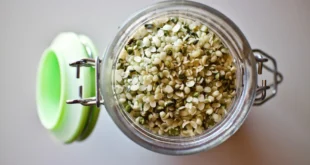When it comes to identifying rodent infestations, one of the key things to look out for is their droppings. However, many people often struggle with differentiating between mouse vs rat droppings. While both rodents may seem similar at first glance, there are distinct differences in their droppings that can help identify which type of rodent you are dealing with.
It is crucial to correctly identify rodent droppings as it can determine the necessary course of action for pest control and prevention. In this section, we will discuss the importance of being able to differentiate between mouse and rat droppings, including how they can impact your health and home.
Signs of a Mouse Infestation
When it comes to identifying mouse droppings, there are a few key characteristics to look out for. Mouse droppings are typically small in size, measuring around 3-8mm in length and 1-2mm in width. This makes them significantly smaller than rat droppings, which can measure up to 20mm in length.
Another distinguishing feature of mouse droppings is their shape. They are usually cylindrical with pointed ends, resembling a grain of rice or a small pellet. This is due to the structure of a mouse’s digestive system, which produces compact and elongated feces.
In terms of color, mouse droppings can vary depending on what the mouse has been eating. However, they typically have a dark brown or black hue and may appear slightly shiny due to their moist texture when fresh. As time passes, they will dry out and become lighter in color.
One important thing to note about mouse droppings is that they often leave visible signs of urine as well. This can be seen as small wet spots near the droppings or as streaks within the dropping itself. The presence of urine can also give off a distinct musky odor.
It is also worth mentioning that mice tend to leave their droppings scattered randomly throughout their environment rather than in specific locations as rats do. Therefore, if you notice multiple small pellets scattered around your home or business premises, it is likely that you have a mouse infestation rather than a rat one.
Common Locations for Mouse Droppings
When dealing with a potential rodent infestation, it is important to know the difference between mouse and rat droppings. While both types of droppings can indicate the presence of rodents, they vary in size and shape which can help determine which type of rodent is present.
These are the most common locations where you may find mouse droppings:
Kitchen
One of the most common areas for mouse droppings is in the kitchen. Mice are attracted to food sources, making your kitchen an ideal place for them to scavenge for crumbs or open food containers. Look for droppings along countertops, in cabinets or drawers, and under appliances such as the stove or refrigerator.
Pantry
Similar to the kitchen, mice are drawn to pantries due to their abundance of food options. Check behind boxes and bags of dry goods such as cereal or pasta for signs of droppings.
Storage Areas
Mice tend to seek out dark and cluttered spaces where they can hide and nest. This makes storage areas such as attics, basements, and closets prime locations for mouse activity. Be sure to check corners, shelves, and any stored items for droppings.
Garages/Sheds
Garages and sheds may also attract mice due to their easy access from outside and potential hiding spots among stored items like gardening equipment or sports gear.
Health Risks Associated
While both mouse and rat droppings may seem small and harmless, they can pose serious health risks to humans. Mice are known carriers of diseases that can be transmitted to humans through their feces, urine, and saliva.
Food Contamination
Mice are notorious for rummaging through garbage cans and other unsanitary areas in search of food. When they come into contact with your kitchen counters or pantry shelves, they can easily leave behind bacteria from their droppings on any exposed food items. This can lead to food poisoning and other illnesses if consumed.
Triggers Asthma or Allergies
The dried feces contain a protein that can become airborne when disturbed, leading to respiratory issues such as coughing, sneezing, wheezing, and difficulty breathing. These symptoms are particularly dangerous for those who already have underlying respiratory conditions.
Hantavirus Pulmonary Syndrome (HPS) is a disease caused by breathing in airborne particles from dried droppings or direct contact with infected rodents’ waste products. Other diseases commonly associated with rodents include salmonella.
Disease Carriers
Rodents such as mice and rats are known carriers of various diseases that can be harmful or even fatal to humans. These diseases are usually transmitted through contact with their urine or feces, making it essential to handle any potential infestation promptly.
What are Rat Droppings?
Rat droppings are small, cylindrical-shaped feces left behind by rats. These droppings can range in size from ¼ inch to ½ inch in length and are typically dark brown or black. They may also be slightly tapered at one end, resembling a grain of rice.
One rat can produce up to 50 droppings per day, making it important to quickly identify and remove them from your home or property. In addition to being unsanitary and unpleasant, rat droppings can also carry diseases that can be harmful to humans and pets.
If you suspect that you have a rat infestation, it’s crucial to properly identify any droppings you find to determine the best course of action for removal and prevention. Here are some key characteristics of rat droppings that distinguish them from those of mice:
Size
One of the main differences between rat and mouse droppings is their size. Rat droppings are typically larger than mouse droppings, measuring around 1/2 inch to 3/4 inch in length. They also tend to be thicker than mouse droppings, with a diameter of about 1/4 inch.
Shape
Rat droppings have a distinctive shape that sets them apart from other types of animal feces. They are elongated with pointed ends and have a slightly curved appearance.
This shape is due to their digestive system, which produces cylindrical pellets that are segmented into smaller pieces as they pass through the intestines.
Color
The color of rat droppings can vary depending on what the rats have been eating. Generally, fresh rat droppings will appear dark brown or black. As they age and dry out, they may become lighter in color and eventually turn grayish or even white.
Texture
Mouse droppings are typically small and granular, resembling grains of rice. They are also dark in color and have pointed ends. On the other hand, rat droppings tend to be larger and smoother, with blunt ends. They are also darker, sometimes almost black.
The texture of rat droppings can be more greasy and shiny, whereas mouse droppings are drier and more granular. Identifying the texture of rat droppings can help distinguish between the two pests and determine the appropriate control methods.
When touched or crushed, rat droppings will feel firm and solid due to their compact nature. Unlike
Common Locations
When it comes to identifying mouse and rat droppings, one of the key factors is their location. Both mice and rats can be found in various places, but they may have different preferences when it comes to where they leave their droppings.
Here are some common locations where you may find mouse or rat droppings:
Kitchen
This is often a popular area for both mice and rats due to the availability of food sources. If you see small dark droppings near your pantry, cabinets, or countertops, chances are you have a mouse infestation. Rat droppings tend to be larger and more scattered.
Attics and Crawl Spaces
These areas provide warmth and shelter for rodents, making them a common spot for nesting. Look out for rodent droppings in corners or along walls in these spaces.
Basements
Similar to attics, basements are also attractive nesting spots for rodents because they offer protection from predators and harsh weather conditions. Check behind storage boxes or in dark corners for signs of droppings.
Garages
Rodents can access garages through small gaps or cracks in doors or windows. They may leave their droppings near stored items such as bags of pet food or car engines.
Outdoor AreasMice and rats are also known to make nests outside in piles of debris or woodpiles. Keep an eye out for droppings near these areas as well as around outdoor trash cans. Be sure to call for rodent control. Make sure to also check out pest control in Port Charlotte to ensure a safe living space for you and your family.
Explore the Difference Between Mouse vs Rat Droppings
In conclusion, being able to differentiate between mouse vs rat droppings can help prevent potential health hazards and property damage. Remember to closely examine the size, shape, and texture of the droppings, as well as the potential presence of hair, to accurately determine which rodent may be present.
So, what are you waiting for? Make sure to stay informed and keep your space rodent-free. Don’t wait, take action today!
Did you find this article helpful? Check out the rest of our blogs!
 SlushWeb Live the Way You Love
SlushWeb Live the Way You Love



